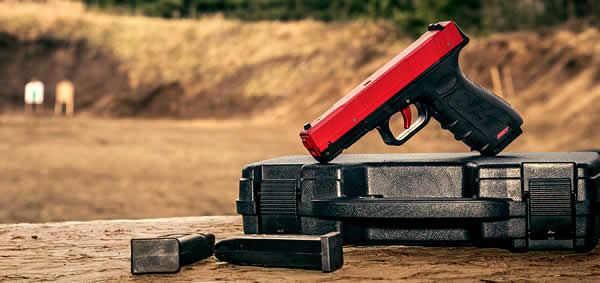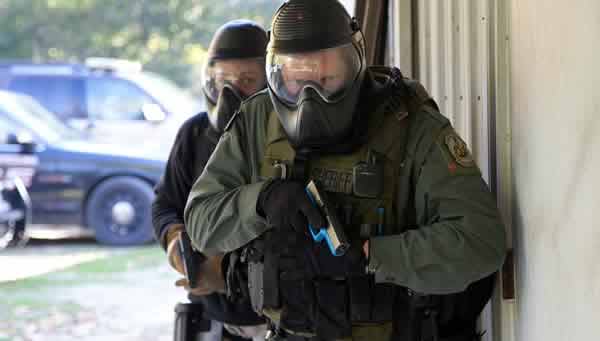
My Two Cents on Revolvers and Gunfighting (Part One)
Lessons from Yesteryear that still Apply Today
Story and Photo by Paul Pawela, Featured Image from The Economist
Due to the political climate and potential gun bans,
revolvers have become fashionable for concealed carry once again. So I thought I would add my two cents on the subject.
The first thing that needs to be addressed is why we are 1) practicing with revolvers (or any gun for that matter), and 2) carrying them. Yes, shooting guns safely both in practice and competition is fun, but really the intent is for self-defense purposes.
The first thing that needs to be addressed is why we are 1) practicing with revolvers (or any gun for that matter), and 2) carrying them. Yes, shooting guns safely both in practice and competition is fun, but really the intent is for self-defense purposes.
These men are all legends in the law enforcement world and have the most quantified performance and experience using revolvers, as they used them for their intended purpose: surviving gunfights.
IN REGARDS TO Hickok, Earp, Hamer and Jordan, all references and advice in this article are from their written accounts, as these men were born before my time. However, the late Jimmy Cirillo and Edmundo Mireles are another matter, as I have interviewed, trained with and become friends with both.
Cirillo’s book, Guns, Bullets, and Gunfights: Lessons and Tales from a Modern-Day Gunfighter, should be required reading, as should Mireles’s book, FBI Miami Firefight: Five Minutes That Changed the Bureau. These books should not just be read, but reread, highlighted and used as a bible on the subject of gunfighting. Mireles and his FBI team were in that horrible gunfight and are the true fathers of reality gunfighting training.
Cirillo, meanwhile, was part of the famed New York City Police Department stakeout squad whose unit was involved in 252 armed confrontations. Cirillo himself was involved in 17 armed confrontations, including 11 gunfights that resulted in the deaths of 11 felons.
Cirillo was not only a famed lawman, he was also a national shooting champion, a bodybuilder in his younger days, a national firearms trainer, author and a devoted family man. In his book, Cirillo outlined common denominators of lawmen/gunfighters who have become involved in such encounters. These include:
- They were competitive shooters with a high degree of skill;
- They were successful hunters who got their quota every year;
- They loved and collected firearms;
- They reloaded ammo;
- They loved the outdoors and sports;
- They were family men;
- They were outgoing and liked people;
- And they had great compassion for the underdog, including helpless victims of crime.
Hickok was said to be a virtuoso with any kind of handgun. When Tom Lewis, a magazine writer who knew many famous gunfighters of the Old West, asked Earp, Bat Masterson, Billy Tilghman and Charlie Siringo who was the deadliest shot of them all, all four without hesitation said Wild Bill.
In his autobiography, Earp was quoted as saying, “There was no man in the Kansas City group who was Wild Bill’s equal with a six-gun.” Hickok was fascinated with firearms as a boy; his first gun was a flintlock pistol, which he used for hunting. His fondness for guns became an obsession and at the age of 12, he acquired both a rifle and a Colt revolver. Hickok soon became the best marksman in the area using his percussion revolver.
As a lawman, Hickok was described as a walking arsenal, originally sporting a pair of .44s (carrying a backup gun is something most gun aficionados do; you will see this again). He also carried two .41 Derringers in his side pockets, a Bowie knife in his belt, and either a shotgun or repeating rifle in his arms when walking the beat as a police officer. Hickok believed in firepower and it was reported that when he cut loose, it sounded like a Gatling gun spraying the landscape. It was rumored Hickok did that for psychological effect, as such a fusillade was often necessary not only to dispose of one opponent but to dissuade the man’s friends from joining in the argument.
As a civilian, his very first lethal encounter was against three men, of which he killed one and wounded two. Hickok would often come up against multiple adversaries in these encounters. Hickok was a firm believer in shooting his antagonists in the head, saying, “A man shot in the torso can keep firing, even if fatally wounded, but a bullet in the head usually put him out of action.” In FBI Miami Firefight, Mireles describes how one cop killer was shot a total of 12 times before he stopped fighting and died. The other was shot six times and died quicker. Why? He was shot four times in the head and neck!
On one occasion Hickok faced multiple opponents. He was in a saloon in Jefferson County, Nebraska, in 1867, when four men started a confrontation with him. When the men went for their guns, Hickok shot and killed the man to his left, but was wounded in the right shoulder. Because Hickok was ambidextrous, he obtained his other gun with his left hand and killed two with bullets to the brain. One antagonist lived but was shot in the cheek and had part of his jaw shot off. Lessons learned here:
• Close distances in lethal confrontations are common, so practice shooting to the head;
• Practice your shooting skills to be equally proficient in both hands;
• And get medical training so you can administer immediate first-aid to yourself and others.
ANYONE WHO CARRIES a gun for self-preservation and defense of others should know the limitations and capabilities of their firearms. One should be equally proficient at long-distance shooting as they are at short distances. It has been said by some that the guns of the Old West were not that reliable and their accuracy was horrible; this is pure nonsense. Earp testified that he watched Hickok shoot 10 rounds both left- and right-handed at a target 100 yards away. He was shooting the letter O of a police station sign, and all 10 rounds hit inside the O.
Hickok was known to shoot a revolver out to 400 yards effectively. This practice saved his life, as he was in the classic street gunfight that made him the legend he is today. In the infamous Hickok-Tutt quick-draw duel, Tutt missed but Hickok struck his opponent directly in the heart at 75 yards.
And he was also equally proficient in all forms of martial arts: with his fists (he beat many a man senseless, including a professional boxer who challenged him), with a knife (he is credited with killing at least two men and one grizzly bear with a Bowie knife), and of course with firearms. Here are some lessons to ponder:
• Hickok knew his guns and their limitations and practiced with them daily;
• He could shoot proficiently with either hand and always carried a backup gun;
• And he was deadly at close range and at long distances with his revolvers, again because he practiced with his guns religiously.
The word gunfighter is a misnomer in the art of self-preservation. One should be equally skilled in using all forms of weapons, as Hickok was in frontier-style combat. This included eye-gouging, ear-chewing and groin-kicking, as well as knife, pistol, shotgun and rifle skills.
For more information on Wild Bill, I highly recommend Legends of the West: Wild Bill Hickok by Richard O’Conner and Wild Bill: The True Story of the American Frontier’s First Gunfighter by Tom Clavin.
Editor’s note: Paul Pawela is a nationally recognized firearms and self-defense expert.






